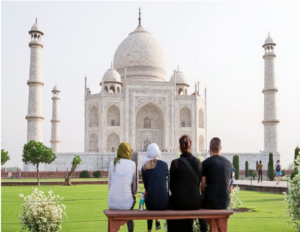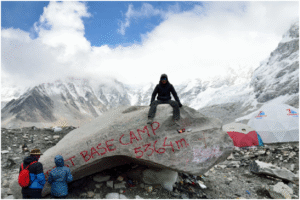All the more reason to dive into the riches of its vestiges and the regional musical tradition.?

According to the controller of the AII ADI express (“express” in the Indian sense of the term: nine and a half hours to cover 400 kilometers) which connects Udaipur to Ahmedabad, the latter is a hellish city: “Dusty, dusty, black, black” , he adds, passing his index finger over his forehead, as if to remove the dirt. Tasting the largest city in Gujarat, a state located in western India, requires a real ability to overcome (convulsive) appearances. In return for this, the visitor will be paid back a hundredfold, won over by the munificence of the colors, assailed by the mixture of odors, drunk by the persistence of the sounds: indescribable sensitive symphony, so specifically Indian, so spectacularly Gujarati” Far from sumptuous voluptuousness of Rajasthan, of which it is bordering, Gujarat knew a certain economic prosperity; its nationals have strongly fueled the Indian diaspora in major Western cities; its industrial activity would almost make it a jealous region, in a country where rich heritage and the complexity of religious and social structures never cease to taunt the poverty of several hundred million illiterate people.
Ahmedabad the rich, the needy, has never been able to charm, as evidenced by the incredible curiosity with which the native considers the lost Westerner, clearly more attractive than the white tiger of the local zoo, yet much rarer and threatens. Four million inhabitants gravitate daily in a traffic where cars, buses, trucks, bicycles, scooters and rickshaws the famous three-wheeled taxis contribute to feed a perpetual pollution in a concert of Klaxon.
Manchester of India”, for its textile factories and, no doubt, his somewhat devious charm. To flee it, however, would be to miss out on a deliciously colorful, good-natured, endearing local life, with also its hidden havens of peace. Like Gandhi’s ashram, a place of prayer, reflection and work, where the Mahatma resided from 1917 to 1930 (until his famous Salt March) and which retains the spirit of the most emblematic character in an appropriate stripping of modern India. Or, a real dive into the depths of a sumptuous past, this age-old underground well half a millennium encouraging the walker to fantasize about Indiana Jones confronted with a vestige shrouded in mystery.
Traces of this heritage can also be sought in the north of Gujarat, in Kutch, a semi-arid region evoking sometimes Morocco, sometimes Syria, proud of its “splendid isolation” and the maintenance of its customs that few things would suffice to to threaten: the last wild donkeys of Asia evolve there in lively and fierce herds; likewise, cut off from time and the laws that generalized corruption flouts, a chain of women aged 15 to 60 exploit, under the dodger and with a smile, salt mines materialized in the form of dozens of crystalline pyramids, that in end of the chain of children package in the most traditional way. But elsewhere, the change is imperceptibly felt” Curator at the Bhuj museum, the only “big city” for hundreds of kilometers around, Umesh Jadia devotes his life to preserving a musical tradition so threatened that no less than twenty instruments are considered endangered: from the morchang, a kind of jew’s harp played by shepherds to entertain the flocks, to the ancestral sharnai once used in ceremonies. Umesh was heard so well that the BBC World Service devoted a program to the subject and that a delegation of artists from Kutch should one day perform in Europe.








